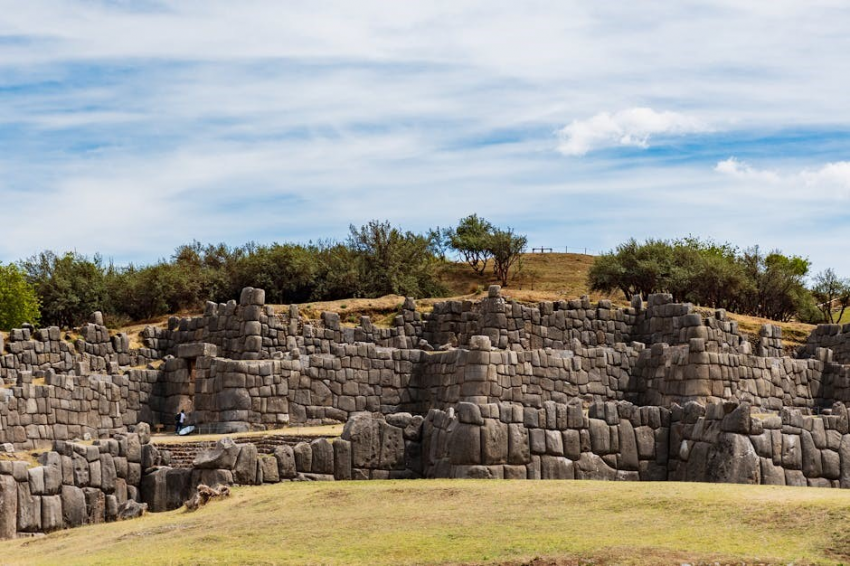The Maya, Aztecs, and Incas were three prominent pre-Columbian civilizations in the Americas, each with distinct cultures, achievements, and historical significance.
1.1 Overview of the Three Civilizations
The Maya, Aztecs, and Incas were advanced pre-Columbian civilizations in Mesoamerica and South America. The Maya flourished in Central America, excelling in astronomy and mathematics. The Aztecs built a centralized empire in Mexico, known for their religious practices. The Incas established a vast empire in the Andes, renowned for their infrastructure.
1.2 Historical Significance and Legacy
The Maya, Aztecs, and Incas left a lasting impact on modern society. Their advancements in astronomy, architecture, and governance continue to inspire wonder. The Maya’s mathematical systems and the Incas’ road networks showcase their ingenuity. These civilizations’ cultural and technological achievements remain vital to understanding ancient American history and their enduring influence today.
Historical Overview of Each Civilization
The Maya flourished in Mesoamerica from 300-900 CE, while the Aztecs rose in the 14th-16th centuries in central Mexico. The Incas built their empire in the Andes from the 12th to 16th centuries, creating vast networks and systems that shaped their regions’ histories.
2.1 The Maya Civilization: Time Period and Location
The Maya civilization thrived in Mesoamerica from 300-900 CE, primarily occupying regions like the Yucatan, Guatemala, Belize, and Honduras. Their influence spanned a vast area, with distinct city-states emerging across these territories, marking a rich cultural and historical legacy that endured beyond their classical period.
2.2 The Aztec Civilization: Time Period and Location
The Aztec civilization flourished from the 1200s to the early 1500s in central Mexico, with its capital, Tenochtitlan, located on the site of modern-day Mexico City. Their empire expanded to encompass a vast territory, establishing a powerful and centralized state that dominated much of Mesoamerica during its peak.
2.3 The Inca Civilization: Time Period and Location
The Inca Empire flourished from the 1100s to the 1500s, centered in the Andean region of South America. Its capital, Cusco, was located in modern-day Peru. The empire expanded to cover a vast territory, stretching from present-day Colombia to Chile, connected by an extensive network of roads and administrative systems.
Political Structures and Class Systems
The Maya, Aztec, and Inca civilizations each had distinct political structures and class systems, featuring hierarchical leadership, social stratification, and centralized power, shaping their societies.
3.1 The Maya: City-States and Governance
The Maya civilization was organized into numerous independent city-states, each ruled by a king or ajaw, supported by nobles and priests. Governance involved complex political alliances, religious ceremonies, and a shared cultural identity, with decision-making often centered around ceremonial centers and temples, reflecting their advanced societal structure and organization.
3.2 The Aztecs: Centralized Empire and Hierarchy
The Aztecs established a centralized empire ruled by an emperor, with a strict hierarchical structure. Society was divided into tiers, including nobles, priests, artisans, and peasants, while slaves formed the lowest class. The empire was maintained through a complex administrative system, with local rulers overseeing provinces and reporting to the central authority.
3.3 The Incas: Monarchy and Administrative Systems
The Incas were ruled by a powerful monarchy, with the Sapa Inca at the top, believed to be divine. Their empire was highly organized, using a system of record-keeping with quipus and an extensive road network. Local leaders managed provinces, and a labor system called mita ensured the empire’s infrastructure and agriculture thrived efficiently.
Religious Practices and Beliefs
The Maya, Aztecs, and Incas each had complex religious systems tied to nature, cosmology, and daily life, influencing their rituals, art, and societal structures deeply.
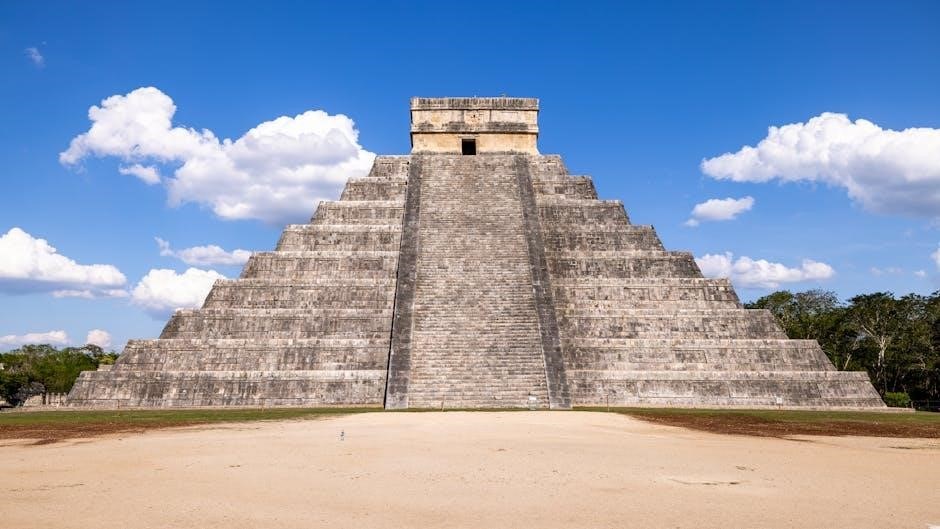
4.1 Maya Religion: Gods, Rituals, and Cosmology
Maya religion centered on a pantheon of gods like Itzamna and Kukulkan, with rituals tied to agriculture, fertility, and cosmic cycles. Human sacrifice was uncommon but present, emphasizing balance in the universe. Their cosmology divided the world into heavens, earth, and underworld, influencing daily life and architectural alignments.
4.2 Aztec Religion: Human Sacrifice and Mythology
Aztec religion emphasized human sacrifice to appease gods like Huitzilopochtli and Quetzalcoatl, believing it maintained cosmic balance. Mythology centered on creation stories and divine struggles, with rituals reflecting a complex cosmology. Sacrifice was seen as a necessity to prevent chaos and ensure the sun’s daily rise, embedding fear and reverence into daily life.
4.3 Inca Religion: Worship of the Sun God and Ancestor Reverence
Inca religion centered on the sun god Inti, considered the source of life and fertility. Ancestor reverence was profound, with mummified rulers believed to influence the living. Rituals included offerings to gods and ancestors, ensuring prosperity and maintaining cosmic harmony. The emperor, as Inti’s descendant, held divine authority, linking religion and governance seamlessly.
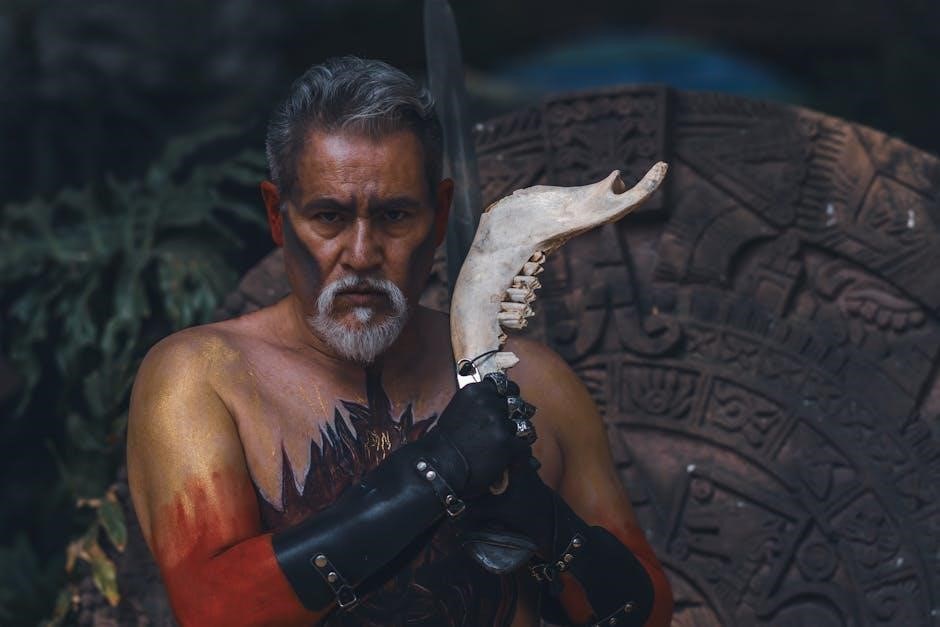
Economic Systems and Daily Life
The Maya, Aztecs, and Incas relied on agriculture and trade for economic stability. The Aztecs used cacao as currency, while the Incas managed without money. Their systems supported thriving populations, showcasing advanced organizational skills.
5.1 Agriculture and Trade in Maya Society
The Maya civilization relied heavily on agriculture, with crops like maize, beans, and squash being central to their economy. Trade was vital, involving goods such as cacao, obsidian, and textiles. Their society, organized into city-states, supported a thriving economy that sustained both urban and rural populations, showcasing their organizational prowess.
5.2 Economic Organization of the Aztec Empire
The Aztec Empire operated a centralized economy with a strong tribute system. Subjects paid taxes in goods and labor, supporting the empire’s infrastructure and elite. Markets thrived, trading goods like cacao, textiles, and obsidian. Cacao beans served as currency, highlighting the empire’s sophisticated economic organization and efficient resource distribution system.
5.3 Inca Economy: Agriculture, Road Networks, and Labor
The Inca economy relied heavily on agriculture, with crops like maize, potatoes, and quinoa. Extensive road networks connected the empire, facilitating communication and trade. Labor was organized through “mit’a,” a system where citizens worked for the state. The empire lacked currency, using reciprocity and redistribution to sustain its economy and infrastructure.
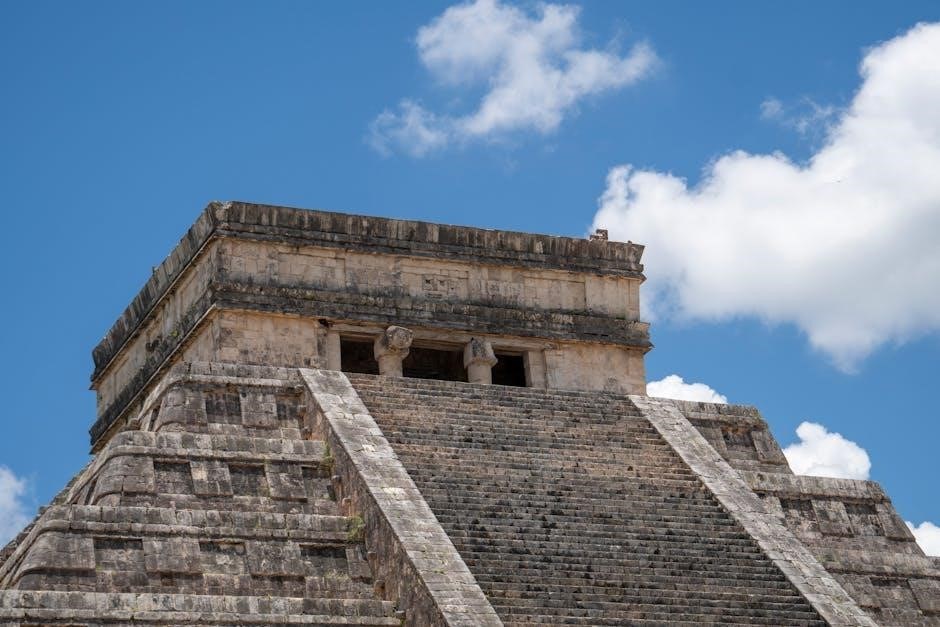
Technological and Cultural Achievements
The Maya, Aztecs, and Incas made remarkable advancements in astronomy, mathematics, architecture, and engineering, leaving behind iconic structures and sophisticated systems that highlight their ingenuity and creativity.
6.1 Maya Contributions: Astronomy, Mathematics, and Architecture
The Maya excelled in astronomy, creating precise calendars and tracking celestial movements. Their advanced mathematics included the concept of zero. Architectural marvels, like pyramids and temples, showcased their engineering prowess and deep understanding of geometry, reflecting their cultural and scientific sophistication.
6.2 Aztec Achievements: Engineering, Calendar Systems, and Art
The Aztecs built impressive engineering feats, such as Tenochtitlán, with advanced aqueducts and causeways. Their calendar systems combined solar and ritual cycles, showcasing astronomical knowledge. Aztec art featured intricate pottery and sculptures, often religious in nature, demonstrating their cultural and artistic sophistication.
6.3 Inca Innovations: Road Construction, Terracing, and Textiles
The Incas built an extensive road network spanning over 25,000 miles, facilitating administration and military movements. Agricultural terracing allowed farming on steep slopes, increasing productivity. Their textiles were renowned for intricate designs and symbolism, reflecting social status and spiritual beliefs, demonstrating exceptional craftsmanship and cultural significance.
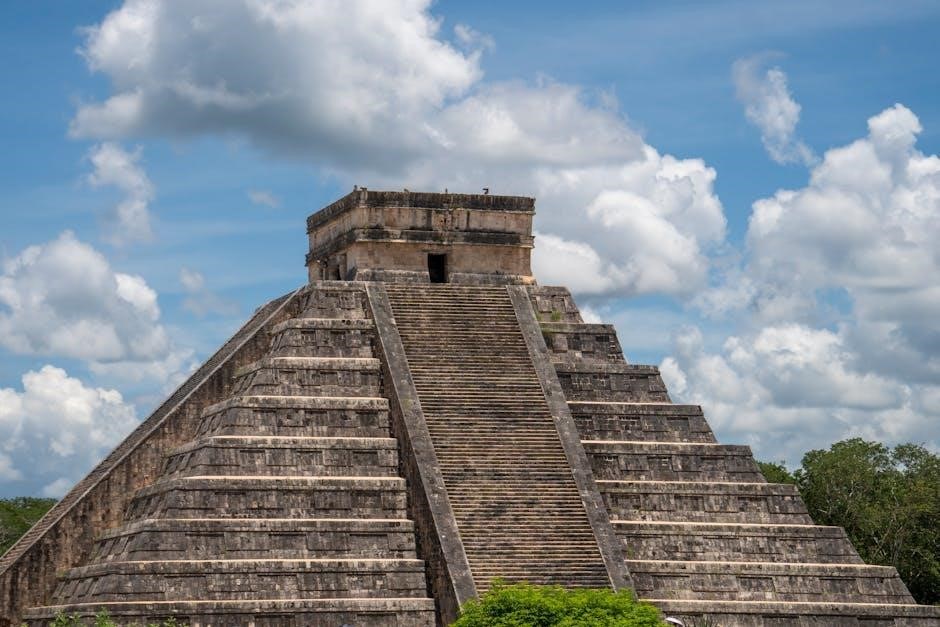
Decline and Fall of the Civilizations
The Maya declined due to internal conflicts and environmental strain. The Aztecs fell to Spanish conquest and disease. The Incas collapsed from civil war and Spanish invasion.
7.1 The Decline of the Maya Civilization
The Maya civilization declined around 900 CE due to internal conflicts, environmental degradation, and resource depletion. Wars, drought, and disease weakened city-states, leading to their abandonment. The Spanish conquest later finalized their collapse, erasing much of their cultural legacy and integrating survivors into colonial systems.
7.2 The Fall of the Aztec Empire
The Aztec Empire fell to the Spanish conquistadors led by Hernán Cortés in 1521. Weakened by smallpox, internal divisions, and Spanish alliances with indigenous groups, the empire collapsed after the siege of Tenochtitlán, marking the end of Aztec dominance and the beginning of Spanish colonial rule in Mexico.
7.3 The Collapse of the Inca Empire
The Inca Empire collapsed due to Spanish conquest, internal strife, and disease. Francisco Pizarro captured Emperor Atahualpa in 1532, leading to a fractured empire. Resistance continued until the 1570s, but Spanish dominance and the devastating impact of European diseases ultimately erased the Inca Empire’s independence and traditional way of life.
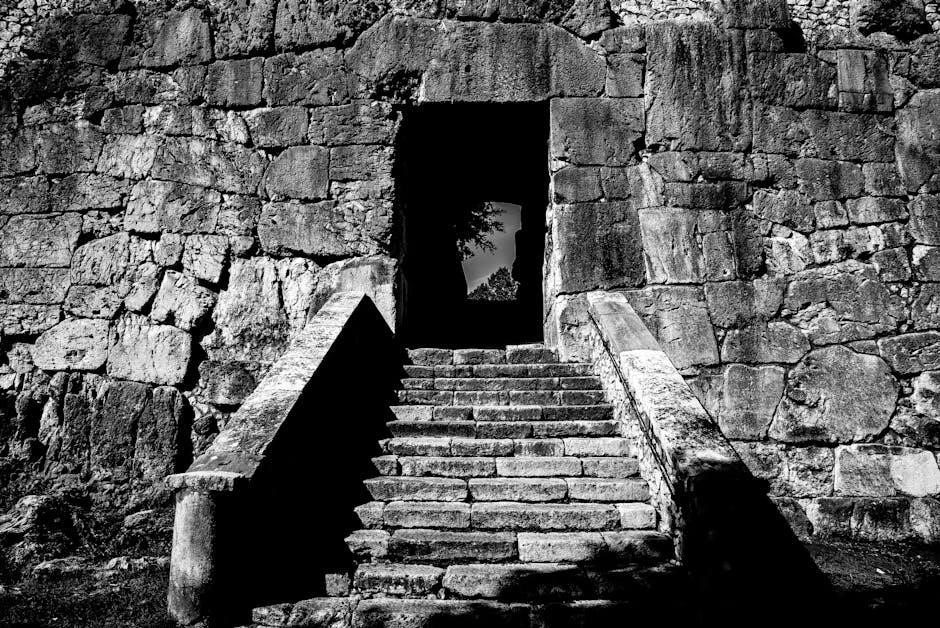
Comparative Analysis
The Maya, Aztecs, and Incas shared hierarchical societies but differed in governance and geography. Each civilization adapted uniquely to their environments, showcasing distinct cultural, political, and economic strategies.
8.1 Similarities and Differences in Governance
The Maya, Aztecs, and Incas each had hierarchical societies with an emperor or ruler at the top. However, their governance structures varied significantly. The Maya operated as decentralized city-states, while the Aztecs and Incas maintained centralized empires. The Aztecs relied on a powerful nobility, whereas the Incas used a vast administrative network.
8.2 Comparing Religious and Cultural Practices
The Maya, Aztecs, and Incas shared polytheistic beliefs, worshipping multiple deities tied to nature and agriculture. Human sacrifice was most prevalent among the Aztecs, while the Maya and Incas practiced it less frequently. All civilizations revered the sun and used calendars, with rulers holding divine status, though religious structures and practices varied widely.
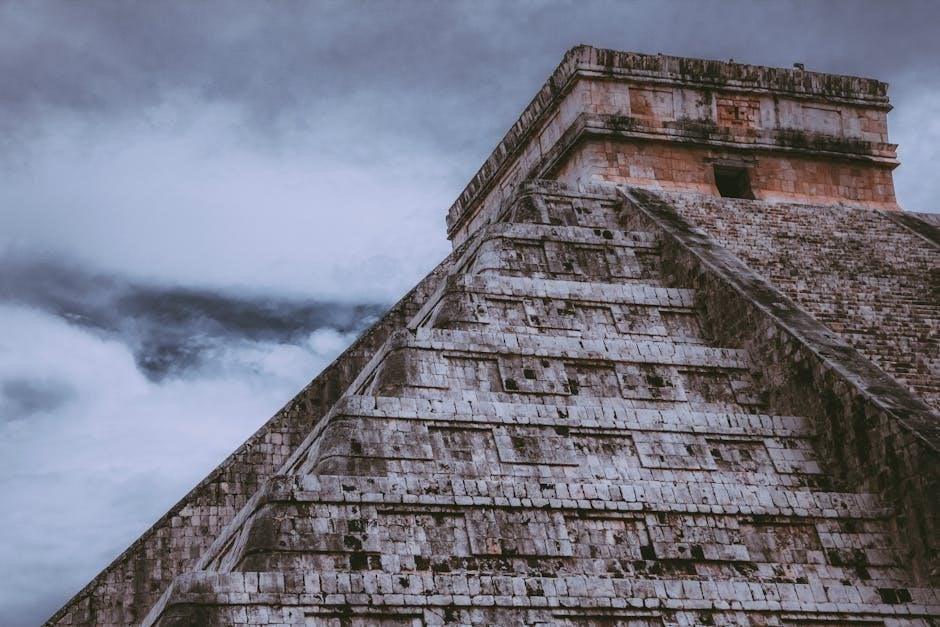
8.3 Economic and Technological Contrasts
The Maya, Aztecs, and Incas had distinct economic systems. The Maya relied on trade and agriculture, while the Aztecs used a centralized market economy. The Incas emphasized agriculture and road networks for resource distribution. Technologically, the Maya advanced in astronomy, the Aztecs in engineering, and the Incas in terracing and textiles, showcasing unique innovations.
The Maya, Aztec, and Inca civilizations left lasting legacies in culture, architecture, and knowledge, inspiring modern admiration for their intellectual and artistic achievements.
9.1 The Lasting Impact of the Maya, Aztec, and Inca Civilizations
The Maya, Aztecs, and Incas left enduring legacies in astronomy, mathematics, architecture, and governance. Their cultural contributions, such as calendars, road networks, and agricultural techniques, continue to inspire modern societies, highlighting their intellectual and artistic brilliance. Their civilizations remain a cornerstone of historical study and cultural pride in the Americas today.
9.2 Modern-Day Relevance and Cultural Significance
The Maya, Aztecs, and Incas inspire modern cultural identity, tourism, and education. Their art, architecture, and traditions influence contemporary creativity, while their historical achievements spark curiosity and research. These civilizations remind us of the richness of indigenous cultures and their enduring contributions to global heritage and understanding of human history.
